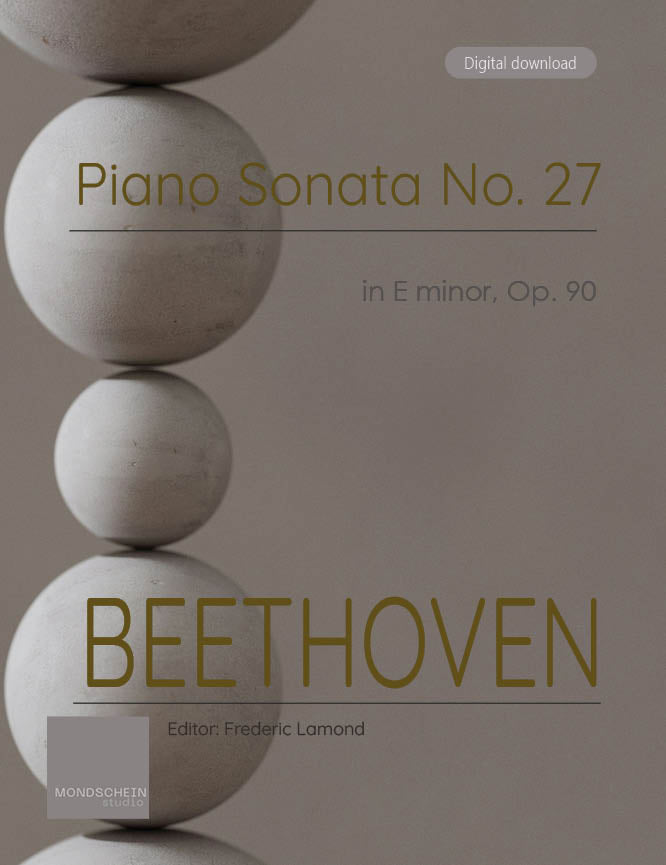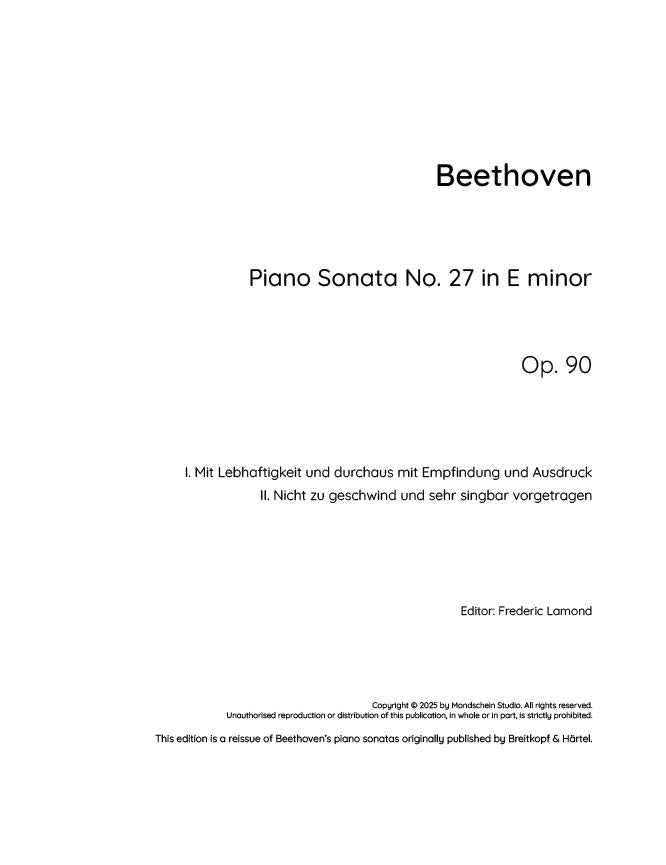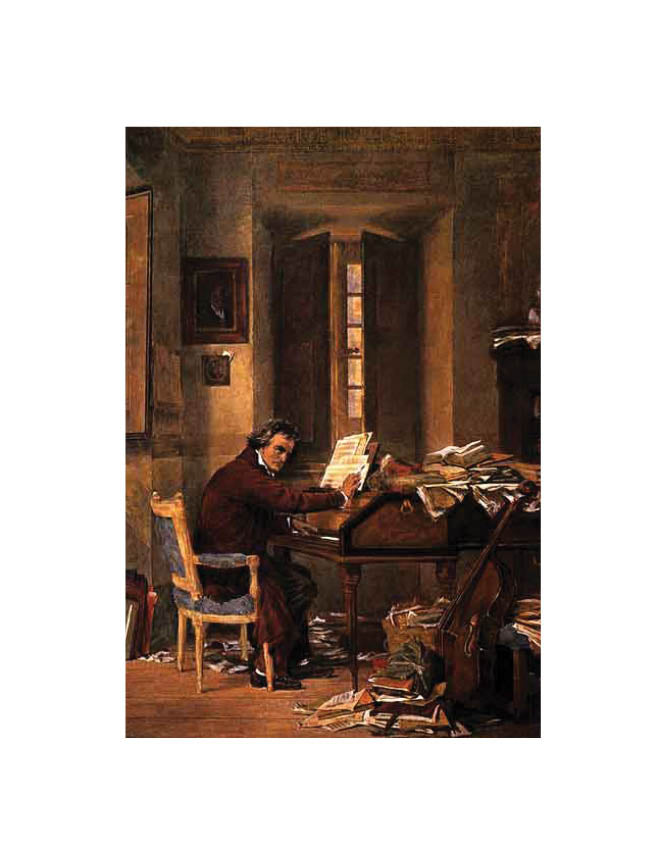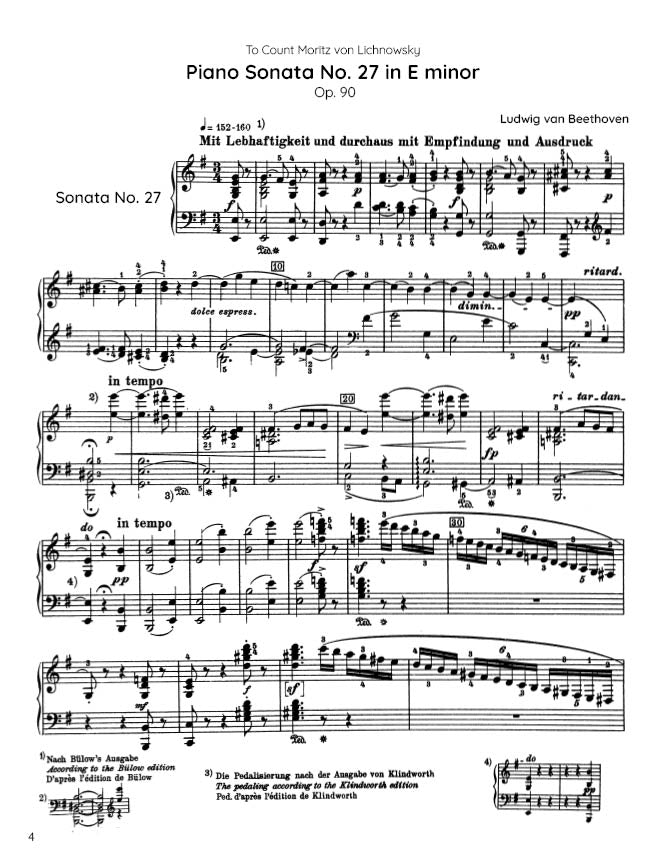Beethoven - Piano Sonata No. 27, Op. 90 (PDF Sheet Music / Digital Download)
Beethoven - Piano Sonata No. 27, Op. 90 (PDF Sheet Music / Digital Download)
Couldn't load pickup availability
Introducing the Beethoven Piano Sonata No. 27 in E minor, Op. 90 – a work that marks a pivotal transition in Beethoven's compositional journey, bridging the heroic middle period and the profound introspection of his late style.
Composed in 1814, this sonata is a masterpiece of conciseness and emotional depth, standing apart from its more expansive predecessors. It foregoes the typical three or four-movement structure in favor of a concentrated two-movement form, each brimming with distinct character and profound expression. Op. 90 is a deeply personal and often lyrical work, revealing Beethoven's mastery in conveying complex emotions with remarkable economy.
About the editor
Frederic Lamond occupies a significant position in the historical lineage of Beethoven interpreters, his influence extending profoundly to the piano sonatas. A direct pupil of Franz Liszt—who himself maintained connections to Beethoven's circle through Carl Czerny—Lamond was a dedicated custodian of a grand tradition in Beethoven performance. His interpretations, documented in recordings from the 1920s and 1930s, are often characterised by their robust character, dramatic contrasts, and an almost improvisatory freedom, reflecting a less overtly "perfected" but deeply personal engagement with the music.
Crucially, Lamond's legacy is also cemented by his own 1923 edition of the complete Beethoven Piano Sonatas, published by Breitkopf & Härtel. This edition stands apart from many contemporary "instructive editions" by its meticulous respect for the musical text; Lamond chose not to directly alter the printed notes. Instead, his contribution lies in the provision of insightful fingerings and illuminating interpretive suggestions, often presented as judicious footnotes. These annotations guide pianists on nuanced aspects such as ornamentation and the precise execution of pauses, offering a unique and invaluable historical perspective on performance practice. Lamond's edition thus serves as an essential resource for serious musicians seeking a profound understanding of Beethoven's keyboard masterworks.
Share








